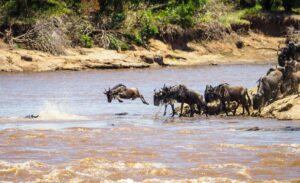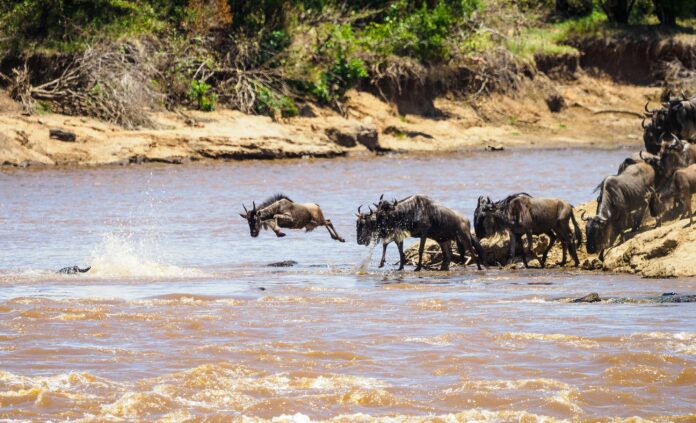BY HANNES THUM
 My students and I have been spending a lot of time talking about movement and migration lately. What spurs animals to move? Why do people move? What do we call home? What even is a home? How do you find a home if you (be you an animal, a human, or both) are on the move?
My students and I have been spending a lot of time talking about movement and migration lately. What spurs animals to move? Why do people move? What do we call home? What even is a home? How do you find a home if you (be you an animal, a human, or both) are on the move?
Or, is a life on the move defined by nothing else so much as a lack of a fixed home?
I always appreciate those scientific conversations with students that draw parallels between humans and other animals. We humans tend to think of ourselves as unique in the animal kingdom—and we are certainly unique, in many ways —but we are, at the end of the day, in the animal kingdom. Much of what we do is explained by that important fact.
What drives any animal or human to move?
We typically think of migration as being a seasonal thing, a long-distance thing, a regular (repetitive) thing, etc. Fair enough. Indeed, this is the definition of migration that we are all taught from a young age and it is what we’ve come to expect when we talk about animal movement.
The famous examples in nature all fit into this standard definition neatly. There are the Arctic terns, which travel annually from the top of the planet to the bottom of the planet and back again, tens of thousands of miles a year, to chase an endless summer. There are the iconic wildebeest migrations in Africa, all full of drama as they navigate predator-strewn terrain in the pursuit of the seasonal growth of green grass. There are the humpback whales that migrate from high latitudes, where their food is, to the tropics, where it is safer to raise their offspring, in a long-distance dance between the need for sustenance and the ancient drive to reproduce.
Throughout the year, we watch the elk in this valley move. In the summer and fall, they live high in the mountains above town. When winter arrives and the snow gets deeper, they move down closer to the valley floor or south to lower elevations. Some of them probably need to travel less than a few miles to escape the deep snow and to find a place to survive winter—their journey is shorter than that of the whales, but isn’t the idea the same?
The main reasons for movement are consistent. The pursuit of safety and shelter and stability. The need for food and water and sustenance. The drive to raise a family in a family-friendly place.
My students have been talking about migration (both human and non-human migration, that is) in terms of “pushes” and “pulls.” What kinds of needs push a person/tern/elk to leave a place? What kinds of desires pull a person/whale/wildebeest towards a new place? How can we pull apart the ways that individuals are pushed from one place and pulled to another?
There is much to chew on, here. At the core of the discussion is the question, no matter what your species, of where we seek and call home. That concept, even in changing environments, stays consistent.



